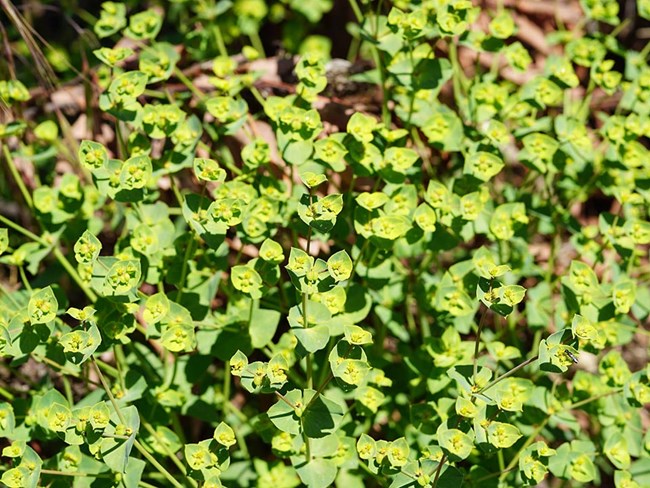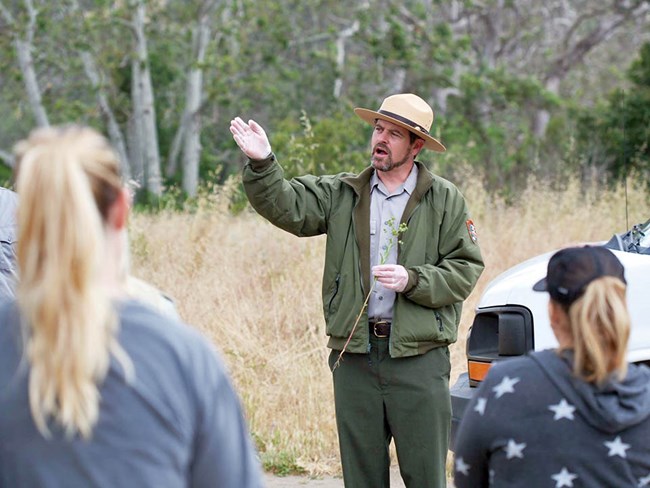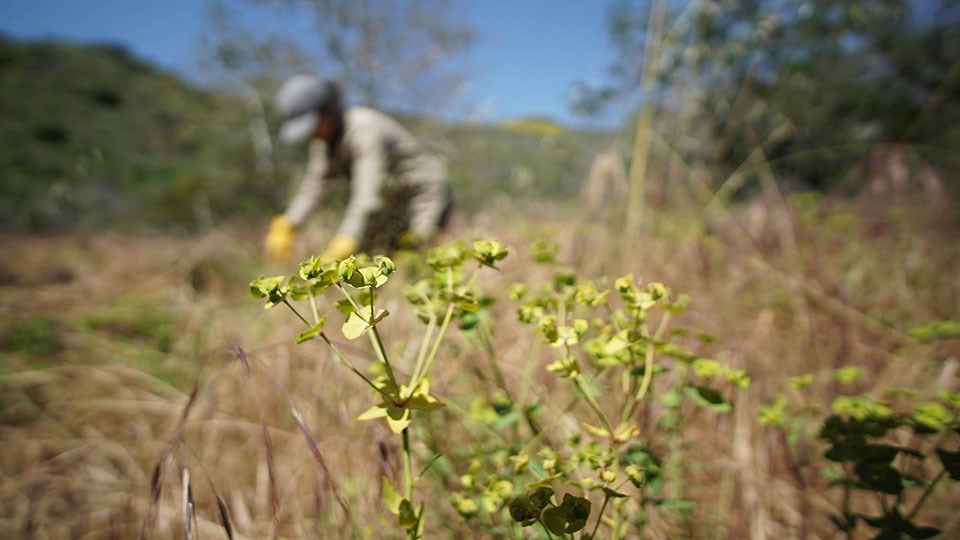Last updated: November 15, 2017
Article
Volunteers Take On Invasive Plant to Restore Zuma Canyon

NPS
October 2017 - Populations of an aggressive and toxic invasive plant have been exploding in Southern California over the last decade. Known as carnation spurge (Euphorbia terracina), the plant is native to Europe and a fairly recent California arrival. It started colonizing disturbed coastal sites in the early to mid-1980s. The first reports of it in the Santa Monica Mountains National Recreation Area are from Solstice Canyon in 1987.
How does aggression manifest itself in a plant? In the case of carnation spurge, fast growth and seed capsules that eject huge numbers of seeds are just a start. It tolerates all kinds of conditions, from hot and dry to cool and wet. Since its milky sap is toxic and tough to digest, it also avoids being eaten by local wildlife. On top of that, it produces chemicals that curb the growth of other nearby plants, giving itself a competitive advantage. These qualities allow it to form large, dense monocultures, to the detriment of native plants and wildlife.
Still, ecologists noted that carnation spurge does seem to have a weakness. The areas it takes over have already been disturbed, if only mildly, by past grazing, fire, or other forces, but it doesn’t get far in areas of undisturbed native vegetation. At Solstice Canyon, park staff, students, and volunteers were able to pull enough carnation spurge over the course of several years to give native plantings a chance to get established. Sure enough, they found that restored native vegetation is doing an impressive job of keeping carnation spurge at bay.

NPS
This year, Santa Monica Mountains Restoration Ecologist Joey Algiers hoped to build on this success along trails at Zuma Canyon, a park site in Malibu that has also been dealing with carnation spurge infestations. While high school students in the Ecohelpers program have worked since 2005 to help keep the infestations under control, Joey knew he needed more hands. The park advertised four weed-pulling volunteer events early this summer, and the community response was amazing!
Ninety-three volunteers attended the events and pulled carnation spurge for a total of 267 volunteer hours. Joey and other park staff were excited and inspired, seeing so many people come out and connect with their local park. The volunteers, some of whom came out repeatedly, were rewarded with visible progress on a scale not often achieved in such a short time.

NPS
Volunteers and Ecohelpers will have another chance to pitch in this winter, when 2,000 native seedlings will need to be planted in the cleared areas. Other volunteers are already at work at the Rancho Sierra Vista native plant nursery helping to grow these seedlings. The species to be planted have been drawn from nearby areas of undisturbed coastal sage scrub vegetation. They include species such as California buckwheat, California black walnut, and bush sunflower.
For the next few years, carnation spurge seeds will continue to sprout and serious weeding will continue to be necessary to allow the native plantings to take hold. Then, if the success at Solstice Canyon is any indication, Joey and all of the volunteers that have invested their time weeding, growing, or planting will get to see their efforts pay off for years to come. Where carnation spurge was removed in Zuma Canyon, a diverse, wildlife-friendly, native coastal sage scrub community will be in its place, healthier than when the area was first invaded. Not to mention more resistant to future invasions!
Prepared by the Mediterranean Coast Inventory and Monitoring Network.
